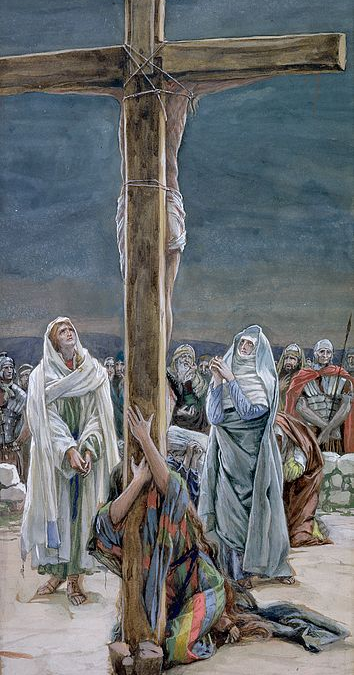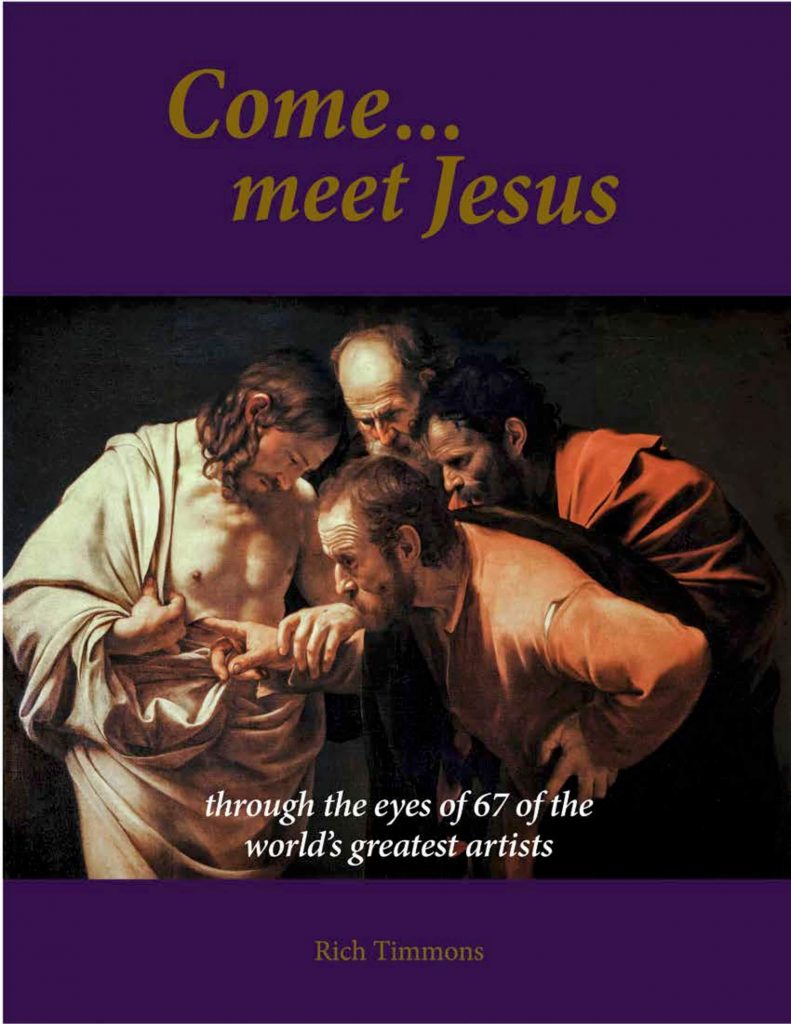But standing by Jesus’ cross were his mother, his mother’s sister, Mary the wife of Clopas, and Mary Magdalene. Therefore when Jesus saw his mother, and the disciple whom he loved standing there, he said to his mother, “Woman, behold, your son!” Then he said to the disciple, “Behold, your mother!” From that hour, the disciple took her to his own home.
John 19:25-26
This perspective of the crucifixion from the back is unusual and therefore can help us consider the whole thing in a new way. The visual focus here is actually not on Christ but on the people surrounding, even crowding, Him. In the background are Roman soldiers and Jewish leaders, but right with Jesus, watching this horror unfold before them, are His mother, Mary Magdalene, the other Mary, and John. His other disciples and family members are not mentioned and are probably at a distance or hiding (remember Peter’s fear and denial of even knowing Jesus?). Imagine watching someone you love die in that way and not being able to do anything to relieve them. Their confusion, grief, and pain must have been unbearable. John is literally clinging to the cross, weeping. And for all the pain that Jesus himself is experiencing, and for all the big-picture atonement that is taking place, Jesus still has compassion on these individuals and what they are feeling right now. He is not preoccupied with His own struggle. He does not dismiss their pain as unimportant because it is less than His or temporary and think, ‘they’ll just have to wait, and when they see Me resurrected they’ll be fine.’ No… to see John so brokenhearted, to see His mother’s face so stricken and helpless… it makes Him want to do something, to take care of them in that moment. So, He tells John to look after Mary, as if she was his own mother, and Mary to look after John. Jesus’ love and provision for each individual is so deep and immovable and sits at the top of His heart no matter what the circumstance. So, while visually the focus is not on Jesus in this illustration, when we move through the part of the narrative it is representing, we come back to Jesus, and sit and marvel at His love.
Tissot created this as part of a large series of paintings of the life of Christ. Tissot enjoyed some success as an artist, primarily painting scenes of young upper-middle class frivolity. But later in life, he experienced a profound renewal of his faith and dedicated the rest of his career to painting Biblical scenes, even traveling to the middle east several times to study the people, landscape, and clothing. He too must have been moved by Jesus’ love and provision for himself, as an individual, and that is why he can paint images like this with such feeling.
Located in the Brooklyn Museum, New York.
Want to see more? Like, follow & share… https://www.facebook.com/comemeetjesus.art
Buy the coffee table book at https://www.comemeetjesus.art


